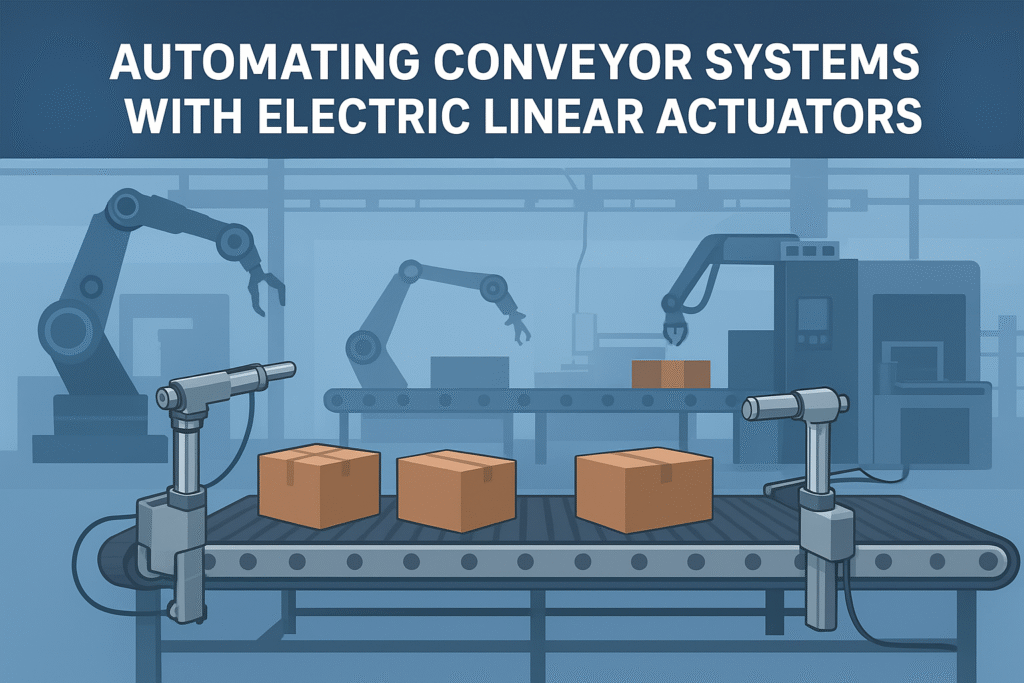Conveyor systems are the lifeline of industries—from manufacturing plants to e-commerce warehouses. They keep goods moving efficiently, reducing manual labor and ensuring productivity. But today’s production demands more than just movement. Industries require smart, flexible, and energy-efficient automation. This is where electric linear actuators are transforming conveyor systems.

Why Traditional Conveyors Need an Upgrade
Hydraulic and pneumatic conveyors once ruled automation, but they come with challenges:
- High maintenance due to leaks and wear.
- Limited precision for delicate operations.
- Continuous energy consumption, even when idle.
Electric linear actuators solve these problems by delivering precision, reliability, and sustainability in a compact package.
How Electric Linear Actuators Improve Conveyor Systems
- Height Adjustment
Actuators allow conveyors to adapt for different product sizes or integrate with other machines seamlessly. - Sorting and Diverting
With actuator-driven diverters, products can be routed to multiple lines quickly and accurately. - Tilting and Positioning
Electric actuators can tilt conveyors for unloading or align products for packaging and labeling. - Load Handling
Heavy-duty actuators manage large products in automotive and industrial sectors, reducing manual lifting. - Smart Integration
IoT-enabled actuators give conveyors predictive maintenance capabilities, reducing downtime.
Benefits of Electric Actuators in Conveyor Automation
- Precision & Accuracy: Smooth and controlled movement for sensitive products.
- Energy Efficiency: Power is used only when actuators move.
- Quiet & Clean Operation: No oil or air leaks, perfect for food and pharma.
- Long Life Cycle: Minimal wear and tear compared to hydraulic/pneumatic options.
- Customization: Stroke length and force can be tailored for specific conveyor tasks.
Real-World Industry Applications
- E-commerce & Logistics: Sorting parcels with speed and accuracy.
- Food Processing: Hygienic conveyors with adjustable heights and smooth handling.
- Pharmaceuticals: Precise product alignment for labeling and bottling.
- Automotive: Handling heavy components across assembly lines.
- Packaging Industry: Seamless integration with box sealing, wrapping, and palletizing systems.
Future of Conveyor Systems with Electric Actuators
The rise of Industry 4.0 demands conveyors that can adapt to dynamic production requirements. Electric actuators enable conveyors to:
- Self-adjust for different product types.
- Integrate with robots for end-to-end automation.
- Collect performance data for AI-driven predictive maintenance.
This means conveyors will no longer be just transport systems, but intelligent assets driving productivity and efficiency.
Conclusion
Electric linear actuators are reshaping conveyor automation. With their precision, efficiency, and adaptability, they make conveyors smarter and more reliable. Whether in warehousing, manufacturing, or packaging, actuator-powered conveyors ensure industries meet the growing demands of speed and quality.
